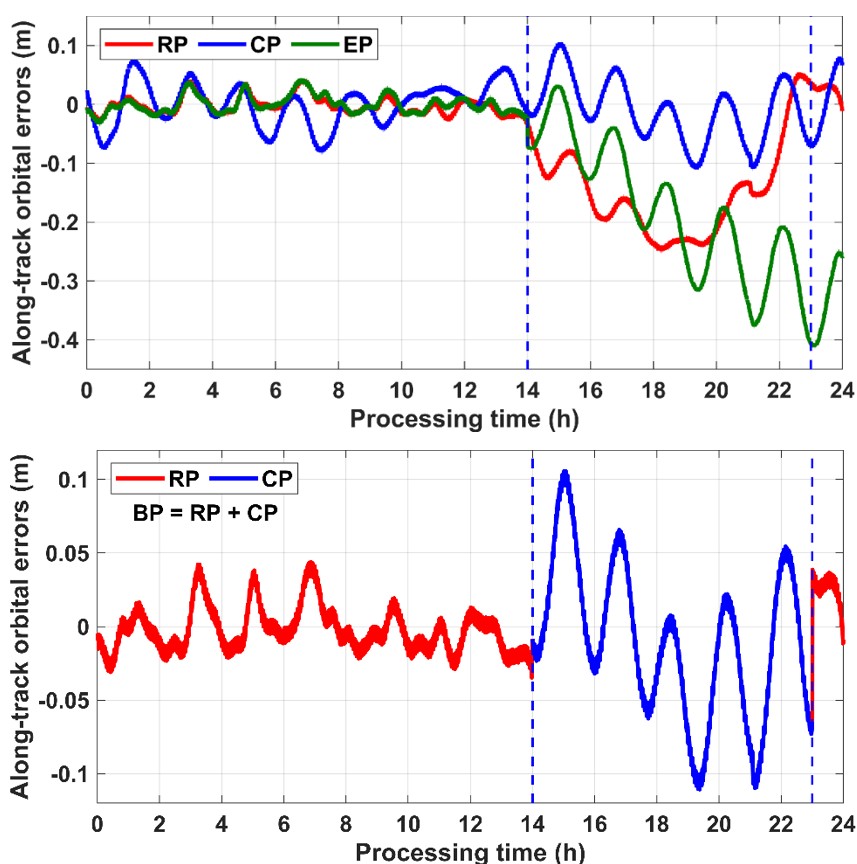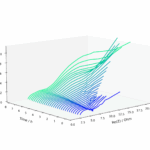2025-07-27 中国科学院(CAS)
 Near-real-time along-track LEO satellite orbital accuracy applying different orbit determination strategies (top) and the adjusted strategy (bottom) under large GNSS observation gap(Image by Chen et al.)
Near-real-time along-track LEO satellite orbital accuracy applying different orbit determination strategies (top) and the adjusted strategy (bottom) under large GNSS observation gap(Image by Chen et al.)
<関連情報>
- https://english.cas.cn/newsroom/research_news/infotech/202507/t20250728_1048554.shtml
- https://navi.ion.org/content/72/3/navi.708
観測の断続性がLEOリアルタイム軌道予測の精度と整合性に与える影響 The Effect of Observation Discontinuities on LEO Real-Time Orbital Prediction Accuracy and Integrity
Beixi Chen, Kan Wang, Ahmed El-Mowafy, and Xuhai Yang
NAVIGATION Published:July 22, 2025
DOI:https://doi.org/10.33012/navi.708
Abstract
Real-time, high-accuracy orbital products for low Earth orbit (LEO) satellites are essential for LEO-augmented real-time positioning, navigation and timing services. In particular, complete and continuous global navigation satellite system (GNSS) observations onboard tracked LEO satellites are necessary to guarantee precise orbit determination (POD) and generate short-term predicted orbits that can be fit with real-time ephemeris parameters. However, in practice, GNSS observations of LEO satellites often suffer from discontinuities due to tracking problems, data transmission problems, or downlinking strategies. Understanding the effect of these observation gaps on orbit accuracy is therefore essential for developing strategies to minimize accuracy degradation in real-time LEO satellite orbits. This study investigates trade-offs between two suites of strategies for addressing multi-hour observation data gaps followed by short segments of tail data during reduced-dynamic POD. The first strategy, EP, involves sacrificing the tail data and extending the prediction time. The second set of strategies retain the tail data but vary the POD strategies: the tested options include maintaining stochastic accelerations as estimable parameters (RP), not estimating stochastic accelerations (CP), or combining the RP-based orbits from the non-gap periods with the CP-based orbits during the gap (BP). Using real GNSS observations from the LEO satellite Sentinel-6A, we evaluated the accuracy and integrity of these strategies for 1-h orbital predictions with assumed gap lengths of 3, 5, 7, and 9 h and tail data lengths set to 15, 30, 45, and 60 min. Results show that the BP strategy achieves the highest prediction accuracy, with mean orbital user range errors (OUREs) of approximately 5.7 and 13.4 cm for a 3-h data gap followed by 60-min and 15-min tails, respectively. In contrast, the EP strategy demonstrates the highest integrity. For a 15-min tail, the 99.9% confidence level of the OURE for the EP strategy reaches approximately 3.1 and 8.7 dm for gap lengths of 3 h and 9 h, respectively. Overall, BP is the preferred strategy for maximizing prediction accuracy, while the EP strategy is preferable for short gaps and tails. The CP strategy provides a balanced approach, maintaining reasonably strong performance for both prediction accuracy and integrity.



